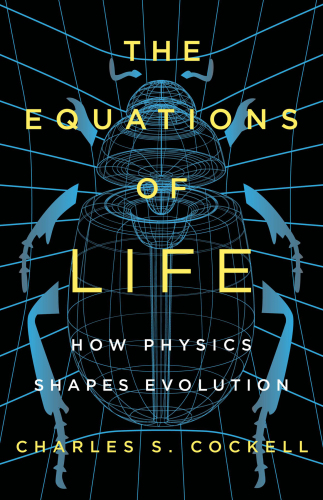
The Equations of Life
How Physics Shapes Evolution
کتاب های مرتبط
- اطلاعات
- نقد و بررسی
- دیدگاه کاربران
نقد و بررسی

April 15, 2018
An insightful argument that evolution, despite producing complex creatures as different as bacteria, bugs, and humans, must obey scientific laws."Physics explains much about why living things look like they do; evolutionary biology provides much of the explanation about how they become like they are." So writes Cockell (Astrobiology/Univ. of Edinburgh; Astrobiology: Understanding Life in the Universe, 2015), the director of the UK Centre for Astrobiology, in his latest, and he proceeds to make a convincing case. Laws set limits. There is life at temperatures above that of boiling water and below freezing, but not by much. When water is absent or locked up in extremely salty environments, life cannot exist. Honey doesn't spoil not because it contains any toxins but because its water is unavailable. Our planet's life is carbon-based and requires a universal solvent, water. Might creatures elsewhere in the universe form themselves from closely related silicon and prefer other common liquids such as ammonia or methane? Moving smoothly from physics to chemistry, biology, and beyond, the author is an amiable guide through some knotty scientific thickets. Ignoring the taboo on equations in popular science writing, Cockell sprinkles them liberally to illustrate their (relative) simplicity. Perhaps the simplest, P = F/A (pressure equals force over area), is critical to the mole, a burrowing animal designed to shift soil by maximizing the force over a small area. Evolution eliminates less efficient burrowers, so all moles, many entirely unrelated, look alike. "If physics and biology are tightly coupled," writes Cockell, "then life outside Earth, if such life exists, might be remarkably similar to life on Earth, and terrestrial life might be less an idiosyncrasy of one experiment in evolution, but a template for much of life in the universe."Many readers will find the equations incomprehensible, but they will relish a lucid, provocative argument that the dazzling variety of organisms produced by 4 billion years of evolution may seem unbounded, but all follow universal laws.
COPYRIGHT(2018) Kirkus Reviews, ALL RIGHTS RESERVED.

Starred review from May 15, 2018
As an astrobiologist, Cockell is involved with the question of whether there is life on other planets. Unable to do personal fieldwork, he and his scientific fellows apply knowledge about life on Earth?what it's made of and what it does?to the findings of spectroscopy, telescopy, and other long-distance methods of research about other objects in space. That what's out there and what's here are made of the same elements indicates that the laws of physics account for what's happening there as well as here, which is evolution, and in the same manner. Life, therefore, is universal, made out of the same cluster of elements (carbon, hydrogen, nitrogen, oxygen, phosphorus, sulfur), with water as the best medium of combination. Cockell leads up to that big message in gratifying chapters about much smaller things?ants, moles, cells, molecules, and atomic particles?and the physics that explains them and their biological functions. The last chapter reconsiders the role of contingency?the chance occurrence that changes something?in light of what the melding of physics and biology reveals about life processes and forms. Both magisterial and collegial, this may be the biology book of the year.(Reprinted with permission of Booklist, copyright 2018, American Library Association.)

























دیدگاه کاربران